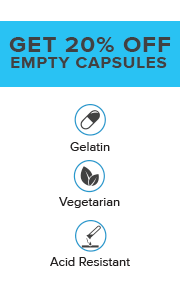| 14-DAY TRIAL FORMULATIONS MY ACCOUNT | |
 | |
| Our Compounding Knowledge, Your Peace of Mind | |
| October 18, 2019 | Volume 16 | Issue 42 | |
| |||||
| |||||
|
This week, we will look at the 5 NIOSH Tables, their titles, and characteristics. There are actually 5 tables in the NIOSH document titled NIOSH List of Antineoplastic and Other Hazardous Drugs in Healthcare Settings, 2016. The first 3 tables are also labeled as a group; Table 1 is Group 1, Table 2 is Group 2, Table 3 is Group 3. Note the decreasing number of manufacturer’s safe-handling guidances (MSHGs) going from Groups 1 to 3. Table 1, Group 1: Antineoplastic drugs, including those with the MSHG Table 2, Group 2: Non-antineoplastic drugs that meet one or more of the NIOSH criteria for a hazardous drug, including those with the MSHG Table 3, Group 3: Non-antineoplastic drugs that primarily have adverse reproductive effects Table 4: List of drugs deleted from the previous update. Currently, there are no deletions to report and this table is empty. Table 5: Personal protective equipment and engineering controls for working with hazardous drugs in healthcare settings. Comments:
Next week: More detailed discussions on the Tables. Reference:
| |||||
|
News EVALI is the New Name for Vaping-related Illness
There is a new troubling observation in the outbreak: A few patients who were hospitalized for vaping-related illness and then discharged were later readmitted to the hospital. Those patients were hospitalized anywhere between five and 55 days after they were discharged. “The issue of readmissions is a relatively new consideration in the outbreak,� Schuchat said. It’s not clear yet what’s behind those readmissions.
Pfizer Working to Fill Void After Teva Stops Making Vincristine
Merck to Test Software Learning to Prevent Drug Shortages
| |||||
|
Did You Know ... …that George Washington said the following? “Be courteous to all, but intimate with few, and let those few be well tried before you give them your confidence. True friendship is a plant of slow growth, and must undergo and withstand the shocks of adversity before it is entitled to appellation.� | |||||
|
Tip of the Week I think most of us have been placed in a situation where an individual comes up, and over a short period of time “moves in� and tries to become a “confidant� with us. However, short acquaintances are rarely proven to be so trustworthy that we should share confidential information with them, as it is unknown what that individual may do with it or what that person’s motives are. I’m reminded of two other interesting quotes:
| |||||
|
IJPC Now on Facebook and Youtube Become a fan of the IJPC Facebook page and share ideas, photos, and keep up to date with the latest compounding information - https://www.facebook.com/IJPCompounding View our growing collection of educational and training videos at www.ijpc.com/video or by subscribing to our Youtube channel at https://www.youtube.com/IJPCompounding. | |||||
|
Looking Back Ben met Anna,
|
| Copyright 2019 International Journal of Pharmaceutical Compounding, Inc. 122 N Bryant Ave, Edmond OK 73034 |
Manage my Email: Subscribe / Unsubscribe |
Comments or Questions: info@compoundingtoday.com |
|
| Reprints & Permissions: Reprints@ijpc.com | |||




